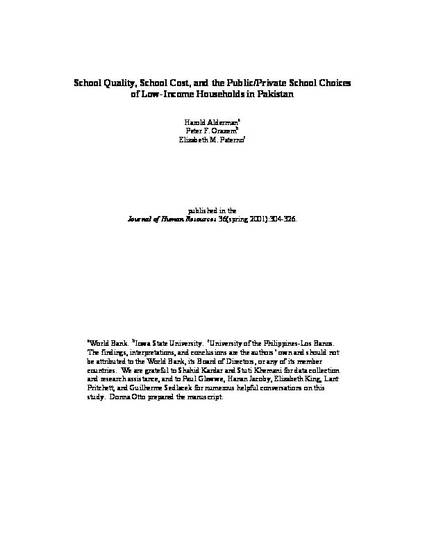
Variation in school attributes, proximity, and fees across neighborhoods is used to identify factors that affect whether poor households send their children to government school, private school, or no school. Analysis shows that even the poorest households use private schools extensively, and that utilization increases with income. Lowering private school fees or distance or raising measured quality raises private school enrollments, partly by transfers from government schools and partly from enrollments of children who otherwise would not have gone to school. The strong demand for private schools is consistent with evidence of greater mathematics and language achievement in private schools than in government schools. These results strongly support an increased role for private delivery of schooling services to poor households in developing countries.
Available at: http://works.bepress.com/peter-orazem/72/

This is a manuscript of an article from The Journal of Human Resources 36 (2001): 304, doi: 10.2307/3069661. Posted with permission.